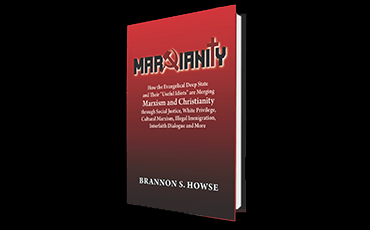An Interpretation of Matthew 24-25 (Part 4)
Dr. Thomas Ice
Since I haveshown in previous installments that Matthew 24 is a future, end-time prophecy,the next issue to tackle is when will verses 4 through 14 come to pass?
There are twomajor views that futurists, like myself, tend to hold. First, some believe that verses 4-14refer to the inter-advent age-that is the time between Christ's first comingand the beginning of the tribulation. Second, some hold that verses 4-14, especially verses 4-8, refer to thefirst part of the tribulation and correspond with the first four seal judgmentsof Revelation 6:1-8. I think thatthe second view is correct.
Inter-Advent Age View
Many futuristinterpreters of the Olivet Discourse believe that verses 4-14 describe thegeneral signs of the inter-advent age. Dr. John F. Walvoord, an advocate of this view says that verses 4-14are:
describing the generalcharacteristics of the age leading up to the end, while at the same timerecognizing that the prediction of difficulties, which will characterized theentire period between the first and second coming of Christ, are fulfilled inan intensified form as the age moves on to its conclusion."[1]
Dr.Walvoord believes that verses 15-26 are specific signs that describe thetribulation, while verses 27-31 relate to the second coming.[2]
Within theinter-advent age view is a variation of this perspective. Some think that verses verses 4-8 aregeneral signs of the inter-advent age leading up to the tribulation. While verses 9-14 reference the firsthalf of the tribulation. "Theevents concerning the first half of the tribulation are recorded in Matthew24:9-14," says Dr. Arnold Fruchtenbaum. This "passage begins with the word then, pointing out that what Christ is describing nowwill come after the event ofnation rising against nation and kingdom against kingdom."[3]
If theinter-advent age view is the correct interpretation, then it would mean thatwars, earthquakes, famines, and the appearance of false Christs would be constantlyon the increase as we approach the tribulation period. However, if these items are referencesto the first half of the tribulation, then wars, earthquakes, famines, andfalse Christs during any part of the church age would not constitute propheticsigns. This explains why somefuturists believe that increasing wars, earthquakes, famines, etc. areprophetically significant, while others, like myself, do not think that theyare prophetically significant, since these verses refer to global events duringthe seven-year tribulation.
Tribulation View
I believe thatMatthew 24:4-41 refers to the seven-year period (Dan. 9:24-27) that manycommonly call the tribulation. Thetribulation is divided in half by the abomination of desolation, mentioned byJesus in verse 15. Thus, verses4-14 refer to the first half of the tribulation and are parallel to the firstfive seal judgments found in Revelation 6.
"If outinterpretation is the right one there must be perfect harmony between thesethree: Old TestamentProphecy: Matthew xxiv:4-44, andRevelation vi-xix." insists Arno Gaebelein.[4] I believe just such a harmony exists,especially between the Olivet Discourse and Revelation. This is what convinces me that verses4-14 refer to the first half of the tribulation. Gaebelein continues:
If this is the correctinterpretation, if Matthew xxiv:4-14 refers to the beginning of that coming endof the age and if Revelation vi refers to the same beginning of the end andthat which follows the sixth chapter leads us on into the great tribulation,then there must be a perfect harmony between that part of the Olivet discoursecontained in Matthew xxiv and the part of Revelation beginning with the sixthchapter. And such is indeed thecase.[5]
"Theacceptance of this view, in part," observes John McLean, "is dependent on howmuch weight is given to the parallels between the synoptics and Revelation."[6] Since all futurists see the OlivetDiscourse as parallel to Revelation to some degree, it makes sense that thesetwo portions of Scripture would be focused on the same basic time period-thetribulation. Dr. McLean hasdisplayed these relationships in the following chart.[7]
<?XML:NAMESPACE PREFIX = V />
Birth Pangs
Matthew 24:8characterizes the events of verses 4-7 as "the beginning of birth-pangs." The Greek word dinon means "the pain of childbirth, travail-pain,birth-pang." It is said to be"intolerable anguish, in reference to the dire calamities which the Jewssupposed would precede the advent of the Messiah."[8] Another authority agrees and says, "ofthe 'Messianic woes', the terrors and torments that precede the coming of theMessianic Age."[9]
Most likely ourLord had in mind the Old Testament reference to birth pangs in Jeremiah 30:6-7,which says, "'Ask now, and see, if a male can give birth. Why do I see every man with his handson his loins, as a woman in childbirth? And why have all faces turned pale? 'Alas! for that day is great, there is none like it; and itis the time of Jacob's distress, but he will be saved from it." Dr. Randall Price explains the birthpangs of Messiah as follows:
Thebirth pangs are significant in the timing of the Tribulation, as revealed byJesus in the Olivet discourse (Matt. 24:8). Jesus' statement of the "birth pangs" is specifically thatthe events of the first half of the Tribulation (vv. 4-7) are merely the"beginning," with the expectation of greater birth pangs in the second half(the "Great Tribulation"). Basedon this analogy, the entire period of the seventieth week is like birthpangs. As a woman must endure theentire period of labor before giving birth, so Israel must endure the entireseven-year Tribulation. The timedivisions of Tribulation are also illustrated by the figure, for just as the naturalprocess intensifies toward delivery after labor ends, so here the Tribulationmoves progressively toward the second advent (vv. 30-31), which takes place"immediately after" the Tribulation ends (v. 29). As there are two phases of the birth pangs (beginning laborand full labor), so the seven years of Tribulation are divided between the lesssevere and more severe experiences of terrestrial and cosmic wrath, as revealedprogressively in the Olivet discourse and the judgment section of Revelation6-19.[10]
Paul also usesthe motif of birth pangs in 1 Thessalonians 5:3 where he says, "While they are saying, "Peace and safety!" then destruction will come upon themsuddenly like birth pangs upon a woman with child; and they shall notescape." The context of thispassage relates to the tribulation period, which fits the other uses of birthpangs.
Raphael Patai inhis helpful book (The Messiah Texts) has dozens of references to extra-biblical commentary from Jewishwritings in a chapter entitled "The Pangs of Times."[11] Patai tells us that "the pangs of theMessianic times are imagined as having heavenly as well as earthly sources andexpressions. . . . Things willcome to such a head that people will despair of Redemption. This will last seven years. And then, unexpectedly, the Messiahwill come."[12] This widespread Jewish idea fitsexactly into the framework that Jesus expresses in the Olivet Discourse. The birth pangs of Messiah, also knownas "the footprints of the Messiah,"[13]support the notion that Matthew 24:4-14 relate to the tribulation periodleading up to the second advent of the Messiah since it is known as a time ofgreat tribulation that results in Messiah's earthly arrival.
Conclusion
I have often beenask on radio talk shows if I believe that events like earthquakes, famines,wars, etc. meant that the end is near. Of course I always say no. This usually surprises the host, since they so often hear from otherprophecy teachers that these things have current prophetic significance. As you can see, if they don't refer tothe church age, then they must have reference to the tribulation. While it is likely that we stand on theverge of tribulation events, we are not yet in that time period. Since Matthew 24:4-14 cannot happenuntil after the rapture and the start of the tribulation, it is wrong to saythat such events are prophetically significant in our own day. The birth pangs do not start untilIsrael faces her time of trouble. Maranatha!
(To BeContinued . . .)
Support Our Broadcast Network
Trending Stories
Latest
We're a 100% Listener Supported Network
3 Simple Ways to Support WVW Foundation
Make Monthly Donations
-or-
A One-Time Donation
-
Mail In Your Donation
Worldview Weekend Foundation
PO BOX 1690
Collierville, TN, 38027 USA -
Donate by Phone
901-825-0652


















